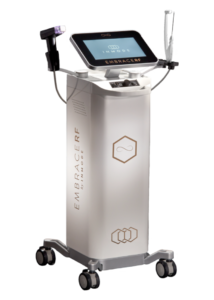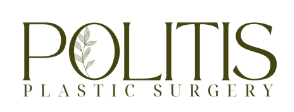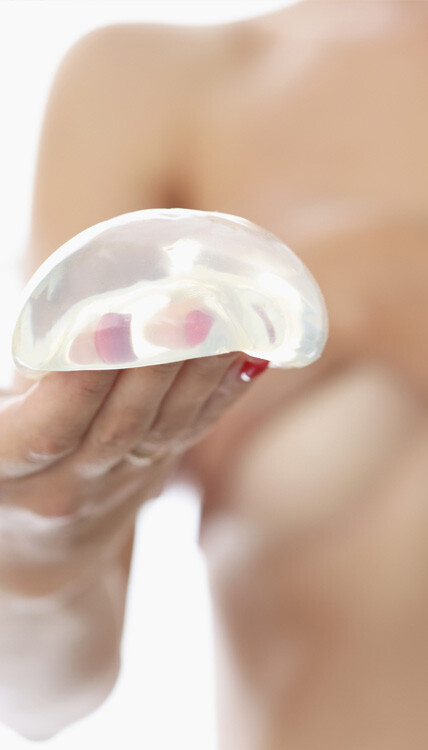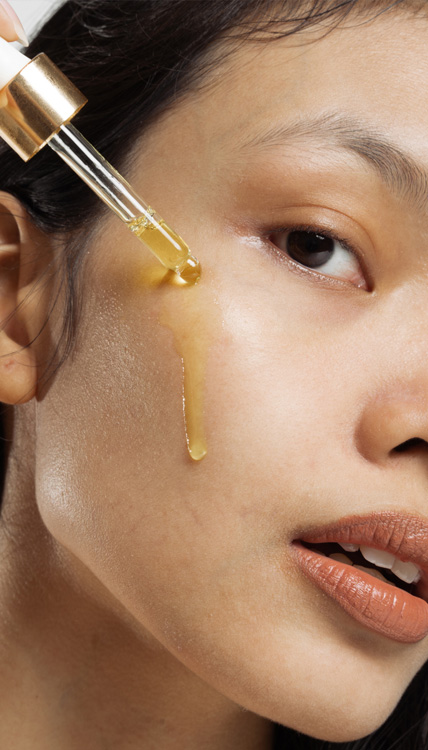Hi My name is Dr. Effie Politis with Politis Plastic Surgery. Breast Implant Surgery removal has been very popular lately, especially with all the social media concerns around this Breast Implant illness.
Continue readingAre you a good candidate for a mommy makeover?
A mommy makeover is any combination of cosmetic procedures that restore your before-pregnancy appearance. Learn more at Politis Plastic Surgery.
Continue readingDoes mastopexy reduce breast size?
Some undergo mastopexy or breast lift surgery that rejuvenates and helps restore the shape of the breasts. Learn more at Politis Plastic Surgery.
Continue readingGrowth Factor Serum by ZO® Skin Health
Learn more about the Growth Factor Serum and its benefits by ZO® Skin Health, here at Politis Plastic Surgery.
Continue readingThe Embrace RF Procedure
We’re all vulnerable to aging. And the quality of your face and skin will inevitably slowly degrade with time.

Often when we inspect our face closely we see loose, sagging skin with small pockets of fat all over. Many of us don’t like these inevitable changes and desire the restoration of youth and beauty.
This is why many are choosing the EmbraceRF procedure as a way to achieve a substantial outcome with a relatively modest risk profile compared to more invasive procedures.
So what is the EmbraceRF procedure?
EmbraceRF is a non-surgical, minimally-invasive, FDA-cleared, innovative therapy for producing results closer to facelift surgery. The highly advanced skin-tightening and face-contouring treatment uses radiofrequency energy to deliver a younger, slimmer appearance. With its blend of two top facial rejuvenation treatments—FaceTite and Morpheus 8—EmbraceRF is a multipurpose approach that contours, lifts, and clears the face and skin without surgery or downtime.
It is a perfect option if you don’t want facelift or surgery as it gives permanent results within a shorter time compared to surgery. The results are also more natural-looking and achieved with less scarring. Plus, the procedure takes just 45 to 60 minutes to complete, making it a very convenient solution for tackling facial aging symptoms.
How is it done?
It is performed under local anesthesia or light sedation. During the procedure, your surgeon passes a thin probe with a needle-like entry point under your skin at the treatment site. The probe is used to direct radiofrequency energy to the underlying skin tissue while the skin surface is treated concurrently with a specially-designed hand piece.
EmbraceRF is right for you if you have:
- Neck and face wrinkles
- Deep creases between your mouth and nose
- Sagging skin and neck contour
- Jowls
- Sagging facial skin with little elasticity
- Sagging neck and chin contour
But you should also be in good overall health, a non-smoker, and have realistic expectations.
How does it work?
EmbraceRF applies radiofrequency energy both to the skin surface and to the sub-dermal layers. As the temperature rises above 60 degrees Celsius under the skin, fat dissipates and the skin tightens.
The procedure melts excess fat, contracts the skin, and enhances overall texture; helping to address loose skin in the neck, jowls, and other body areas. It is effective in eliminating stubborn pockets of fat in the neck and facial areas; hence it tightens loose skin, contracts and contours fat, and allows for shaving off of fat in places such as the nasolabial folds, jaw-line, and chin.
By using controlled radiofrequency energy to heat sub-dermal tissue, EmbraceRF helps to reinvigorate collagen production. The newly produced collagen repairs and rejuvenates skin tissue, reducing and eliminating wrinkles to achieve a smoother, fresher skin. In turn, the new collagen helps to make the skin firmer, stronger, and more elastic. This eliminates skin sagging and improves the outline of areas that previously had unsightly, fatty lumps.
Besides, the FaceTite part of the procedure employs tiny incisions made behind the ears and below the skin to deliver a controlled wave of energy, while the Morpheus 8 part blends micro-needling with radiofrequency to provide even more dramatic results.
What are the benefits of the procedure?
EmbraceRF is an effective alternative to surgical facelift. It restores facial contours in a minimally invasive way, therefore it doesn’t lead to scarring. It is specially tailored to tackle facial fat and skin laxity. Plus, the recovery time is short and you’ll be able to return to work and resume your routine activities after 48 hours.
The non-surgical procedure can be done on the forehead, eye, brow, chin, cheek, jaw, and neck areas, delivering benefits that are close to those of facelift without the surgery and its associated recovery. It effectively reduces wrinkles and fine lines, minimizes skin laxity, and remodels neck, jaw line and facial fat.
At Politis Plastic Surgery, we offer EmbraceRF and other non-surgical solutions alongside surgical procedures. We carefully select non-surgical techniques that offer stellar, dependable and quality results for our clients, ensuring that all our procedures add value and help our patients look their best.
Would you like trusted, non-surgical rejuvenation performed by a skilled, experienced plastic surgeon. Book your consultation with Dr. Effie Politis today to find out the right surgical and non-surgical options that suit your cosmetic needs. For more information on the EmbraceRF procedure and other facial rejuvenation techniques, visit the site “Politis Plastic Surgery.”
How to Optimize the Neck Lift
What else can make a gorgeous face look better?
A striking and contoured neck!
The neck is what balances and amplifies the unique features of the face.
The question, now, is how do we achieve that?
A neck lift might just be what we are looking for!
What is a neck lift?
A neck lift is a surgical procedure to boost the appearance of the neck.
This outpatient procedure is done under sedation and local or general anesthesia to refine the shape and contours of the neck and jawline.
At Politis Plastic Surgery, we offer the neck lift procedure for those who aren’t happy with their neck appearance. We frequently see patients with a turkey wattle neck, excessively fatty neck, and necks with too much skin. Through a sequence of customized procedures, we sculpt and refine it to achieve aesthetically pleasant outcomes.
So what makes a neck beautiful?
Though different people may hold varied opinions about what makes a lovely neck, specific characteristics are considered fundamental.
Generally, a neck is beautiful if it is longer, has a sharper contour and distinct jawline. Plus, the angle between the neck and the head should be 105 to 120 degrees.
At Politis Plastic Surgery, we have mastered these crucial marks of a beautiful neck. When you come for neck lift surgery, we will evaluate the shape and volume of your lower face, jawline, and neck with consideration to the ideal traits of an attractive neck.
We will tailor our surgical steps in a way that achieves the most optimized outcome. Usually, this involves removing volume discrepancy, ensuring balance, and establishing a neck contour. The result will be a more optimized neck appearance that boosts your confidence.
What are the goals of neck lift surgery?
A neck lift corrects any imbalances in the volumes and positions of the contents of the neck, jawline, and face.
In a younger person, the procedure corrects the angle of the neck by removing excess skin and muscles. For older patients, a combination of techniques is employed to tackle imbalances due to excess skin, too much fat, and bigger or weaker neck muscles.
At Politis Plastic Surgery, we offer a customized neck lift procedure for every patient.
However, we have designed the procedure to achieve three objectives.
First, the procedure reduces deep neck fat and submandibular glands to reduce neck volume and balance the jawline and the face.
Second, the surgery removes excess skin and neck muscles to deepen the angle of the neck, ensuring a smooth transition from the face to the neck.
And third, neck lift repositions the elements of the neck to achieve a better overall alignment of the neck, jawline, and lower face.
Before the procedure, we will speak with you to better understand your goals and expectations. We will explain the options and craft a treatment plan that best meets your needs.
How are the structures in the neck accessed?
To optimize the outcome and avoid imbalance between the neck and the face, we assess each surgical step in isolation and anticipate the impact of each subsequent surgical maneuver.
The whole procedure is broken down into a series of interdependent and well-understood maneuvers with a pre-determined outcome.
The neck is approached through a submental incision placed at least 1.5cm posterior to the submental crease. This enables access to all the structures that may need to be corrected.
But to fully expose and reduce deep fat and submandibular glands, your plastic surgeon will elevate the neck muscles. The doctor then carefully evaluates the fat and glands to determine their impact on neck volume and contours before being reduced.
If the submandibular glands are enlarged or malpositioned in a way that affects the neck contours, they are modified before any significant reduction of the deep fat and neck muscles is done.
After that, your surgeon will raise skin flaps over the neck, retaining at least a 5 mm thickness of subcutaneous fat whenever possible.
For a wide exposure of the submental and submandibular triangles to provide complete visualization, your surgeon will make a deep skin incision to elevate the neck muscles.
How is the neck refined to achieve the desired outcome?
If you have deep central fat in your neck, your surgeon will reduce the fat to the desired level. Doing this helps cut down the fat volume, enhance balance and create a contour in the neck.
With the fat reduced, your doctor will assess the shape and angle of your neck. If the angle between the neck and the head is blunted, the surgeon will remove or alter your neck muscles to deepen the angle.
Next, the roof of the submental triangle is examined, and the muscles in the area are reduced carefully to minimize the mass to a plane level.
Lastly, the surgeon creates neck contours at the submental triangle.
Safe, effective neck-lift surgery
Would you like to refine your neck to achieve more balance with your face? At Politis Plastic Surgery, we have the equipment, personnel, and expertise to deliver successful neck lift procedures.
Every step in the neck lift procedure is designed to address a specific preoperative and intraoperative finding and helps to optimize the surgical outcome.
Make an appointment today and speak with Dr. Effie Politis about your goals and expectations and determine whether a neck lift is the right procedure for you. She will listen to you, explain the spatial location and relation between the structures of your neck, and share with you all the possible options.
Dr. Politis will address all your questions and help you understand the impact of each possible modification and sequential surgical step on the final result.
How Kojic Acid Annihilates Hyperpigmentation
Do you have a skin blemish caused by sun damage, aging, melasma, or inflammation? Would you like to make your skin clear, glowing, and beautifully even-toned? Or do you want a potent alternative to hydroquinone?
Enter, Kojic acid.
Kojic acid is derived from several types of fungi. It is also a byproduct of fermented rice wine and soy sauce. It is a highly effective natural skin brightening ingredient applied topically to treat hyper-pigmentation.
Due to its ability to penetrate the skin rapidly and to quickly inhibit melanin production, the chemical reduces dark spots and brightens the skin in no time.
When compared to tranexamic acid (8-12 weeks) and retinol (4-6 weeks), Kojic acid provides one of the quickest (2-3 weeks) spot lightening effects.
How does Kojic acid work?
Kojic acid provides a powerful melanin-blocking effect that helps prevent all kinds of hyperpigmentation, whether sun-induced, age-related, or post-inflammatory.
Melanin is the natural body pigment that gives the skin, hair, and eyes their color and is produced when melanocytes convert the protein tyrosine to melanin with the help of the enzyme tyrosinase.
Kojic acid can inhibit tyrosinase, the enzyme responsible for the production of melanin. By stopping tyrosinase activity, the chemical blocks tyrosine from forming, which prevents melanin synthesis and results in less skin pigmentation.
Since hyper-pigmentation tends to occur when melanin is produced in high concentrations and then becomes clumped, diminished melanin production effectively prevents dark spots, sun spots, and age spots. It also limits pigmentation after sunburn, stops the formation of freckles, and clears melasma.
What are the benefits of Kojic acid?
- It helps fade spots. Kojic acid inhibits melanin production, hence lightens sun spots, pigmentation, and marks left by pimples or acne scars.
- It helps to brighten the skin. Kojic acid protects against ultraviolet light, keeps the skin safe from sun damage, and ensures brighter and glowing skin.
- It relieves melasma. After pregnancy, many women have melasma—a condition characterized by dark patches on the body and face. Kojic acid is effective in eliminating the patches.
- It inhibits the future appearance of scars. Kojic acid works on superficial scars and prevents their resurgence.
- It prevents skin infections. Kojic acid has antibacterial and antifungal properties. It prevents bacterial infections such as acne and fungal skin infections, like athlete’s foot, ringworm, and yeast infections of the skin.
Who should use Kojic acid?
Kojic acid is ideal for anyone looking for a naturally occurring ingredient to lighten dark spots and provide a more even complexion.
You can use it when:
- You have an uneven, pigmented complexion
- You are battling a skin pigment of any kind, such as post-inflammatory pigmentation, sun damage, melasma, and dark spots after acne or injuries
- You want to improve your under-eye circles due to hyper-pigmentation
- You want to treat mild wrinkles and photo-damage
- You want to treat and prevent bacterial infections of the skin, such as yeast infections and athlete’s foot
Is Kojic acid safe?
Kojic acid has mild antioxidant, antimicrobial and exfoliating properties. It is a safe and well-tolerated skin-lightening product for the face and body, even on sensitive skin.
Kojic acid is an ideal option if your skin can’t tolerate ingredients like hydroquinone or retinoids.
You can use a serum or pad infused with Kojic acid once or twice a day, depending on the concentration of Kojic acid and the product’s other ingredients. It is safe for topical application in concentrations of up to 1% in skincare products.
But you should not use it for longer than three months at a time. Use it only in smaller doses, particularly if your skin borders on the more sensitive side.
Excessive application of Kojic acid can irritate the skin, resulting in contact dermatitis—a surface-level red rash.
Plus, Kojic acid should be used for fade discoloration, not complete lightening of the complexion of the whole skin.
Kojic acid can be applied in small amounts for fade discoloration to eliminate spots, such as age spots, sun spots, and obnoxious post-breakout marks.
Never apply kojic acid to broken or irritable skin.
Always remember to apply sunscreen in the morning also to help protect the skin.
Whenever you notice adverse effects, stop the use and consult your doctor immediately.
How do you prevent dermatitis when using Kojic acid?
Kojic acid is not suitable for sensitive skin, with dermatitis as its most common side effect. It can cause redness, irritation, swelling, itchiness, and pain when it causes a flare-up.
To prevent dermatitis, Kojic acid should be paired with soothing ingredients to keep skin happy and side-effect-free.
For example, you can pair it with azelaic acid, green tea extract, and resveratrol. It used to be paired with hydroquinone to increase potency, but hydroquinone is in the process of being phased out.
As a rule, buy Kojic acid-containing products only when you know when and how to use them, and then strictly follow your plastic surgeon’s or dermatologist’s instructions.
Trustworthy plastic surgery advice
Are you looking for freedom from dark spots, sun spots, age spots, or stubborn, post-breakout marks and just don’t know how? Would you like to put your best complexion forward and enjoy enhanced self-confidence but not know the best product for your skin?
At Politis Plastic Surgery, we can help and guide you on nourishing your skin to achieve even-toned, glowing skin.
For years, Dr. Effie Politis has been helping women become their best selves, regaining their confidence over their bodies and skin. She is well equipped with the knowledge and experience to help you.
She has recommended Kojic acid as an ingredient for clearing dark spots and skin pigmentations. That is because Kojic acid is a well-studied ingredient with high safety and tolerability profile.
Come in and speak with Dr. Effie Politis today to determine if Kojic acid or any other skin brightening ingredient is ideal for you.\
You can also discuss other procedures such as breast augmentation, breast implants, breast lift, buttock lift, facelift, liposuction, tummy tuck, lip augmentation, rhinoplasty, dermabrasion, and other forms of plastic surgery.
Benefits of PRF over PRP
PRF and PRP are both regenerative processes offered by plastic surgeons. These procedures are for patients who want to improve the appearance of their skin, combat tissue damage and overall rejuvenate their complexion.
Both are non-surgical procedures. However, the process of obtaining PRF differs a bit from that of PRP. It is also a more prudent choice of procedure, the benefits of which are explained below.
What is PRF?
PRF stands for Platelet-rich Fibrin. It is a plastic surgery treatment used to treat areas in the face showing signs of aging to give the skin a softer, younger look. The PRF platelet concentrate is achieved by extracting blood from the patient and then centrifuging it. The fibrinogen converts into fibrin after making contact with the thrombin in the blood, and the platelets are preserved in the meshes of fibrin. No anticoagulant is used when the blood is processed.
What is PRP?
PRP stands for Platelet-rich Plasma. It is also a process in cosmetic surgery; however, it requires more blood to be extracted from the patient than PRF does and then spins it at a higher speed in the centrifuge. This process causes the layers of the blood to disperse, with the white blood cells and stem cells gathering at the bottom of the test tube, separated from the platelets and plasma left at the top. The slower spinning of PRF means that the healing white blood cells and stem cells remain with the platelets used as filler.
Why PRF is a Better Choice than PRP
- PRF is a multifunctional treatment proven to help with texturing, wrinkles, and bringing in stem cells. By repairing damaged skin cells, fostering collagen production, and boosting stem cell rejuvenation, PRF fillers improve the skin’s texture and brighten the face’s complexion.
- Skin treated with PRF looks tighter and brighter because PRF contains approximately ten times the platelet concentration that the body has due to the centrifugation process. PRF can also be used for treating hair thinning and enhancing fat graft volume retention.
- The retention of the white blood cells and stem cells in PRF gives it more healing factors than PRP. The slower spinning in the centrifuge stage causes less trauma to the individual blood cells overall.
- PRF can be used as a filler by itself or blended with Sculptra (an injectable cosmetic filler) to form plasmasculpt.
- PRF is less processed than PRP, has gentler centrifugation, and no anticoagulant is used.
- The benefits of PRF and PRP are the same. Still, PRF releases more growth factors over time, so it continues to work for you even after the procedure is complete. These growth factors aid skin rejuvenation and increase skin volume.
- Platelet-rich fibrin is a natural, less processed alternative to PRP. The anticoagulant used in PRP is acid citrate dextrose, which stops the blood from clotting too quickly. The lack of anticoagulants in PRF allows the fibrinogen in our blood to convert to fibrin, creating a matrix that holds the platelets for the slow release of growth factors. This process avoids bringing external cosmetic substances into the procedure. It starts the tissue healing process in the skin using only the patient’s blood cells.
- PRF is a beneficial, non-surgical cosmetic procedure that anyone thinking about getting fillers should consider.
It is vital to make sure that you completely understand the process before booking an appointment, which means seeking advice from a specialist.
Dr. Effie Politis conducts her practice Politis Plastic Surgery in Tampa, Florida. She specializes in plastic and reconstructive surgeries, including PRF.
Check out her website for more in-depth information about this procedure.
Renuva Injections in Tampa, FL
- Quick, safe and effective non-surgical procedure
- Restores lost facial and body volume and clears out depressions
- Covers up and camouflages textural irregularities
- Restores youthful fullness to the cheeks
- No downtime—you resume routine activities on the same day
- Reduces acne scars, fine lines, and wrinkles
- Provides long-lasting results that last upwards of 10 years after treatment
- Induces natural fat formation using your own body’s natural processes
- With Renuva, there is usually no need for liposuction.
- Renuva components are eventually replaced by natural fat cells.
- Aging skin
- Minor skin defects
- Skin lacking in volume
- Scarring from previous procedures
- Fine lines and wrinkles
- Dimples caused by uneven cellulite
6 Innovations to Know About From 2021’s Biggest Aesthetic Meeting
The year 2020 was like no other for the regenerative industry. With lockdowns imposed to curb the COVID-19 pandemic, cosmetic surgeons and clinics could not conduct procedures for months. Neither could plastic surgeons hold in-person meetings, spend time together, learn from each other, and share knowledge on innovative techniques.
But the demand for cosmetic treatments was never curtailed by the lockdowns. On the contrary, many Americans felt compelled to recommit to improving their appearance and wellbeing.
Unimpeded growth and popularity
When the lockdowns were lifted, the demand for cosmetic treatments skyrocketed, partly due to patients who had missed their appointments, but also because of many first-time patients interested in undergoing cosmetic enhancements. 2020 gave us the “Zoom Boom” and a rise in the demand for treatments.
The trend is set to continue in 2021, with millions of people in the United States reportedly interested in improving their appearance.
Takeaways from the 2021 Aesthetic Society Meeting
With the lockdowns lifted, the top aesthetic experts recently gathered in Miami for the 2021 Aesthetic Society Meeting—their first in-person conference since the COVID-19 pandemic hit the globe. The meeting provided doctors an opportunity to understand how each of them has coped with the pandemic, reflect on the positive changes they have implemented since the pandemic struck, and build on techniques that are working.
So what are the biggest takeaways from the conference? And what can prospective patients expect for the future of cosmetic surgery?
1. Combination therapies
The 2021 Aesthetic Society Meeting affirmed the combining of surgical and non-surgical technology as the future of plastic surgery. The doctors agreed that blending surgical and non-surgical techniques allows for more efficient treatment plans, ensures natural-appearing revitalization, improves the overall result, and minimizes bruising and swelling after surgery.
For instance, with the rise in global obsession with eliminating dark circles, enhancing cheekbones, uplifting eyebrows, reducing wrinkles, and overall smoothing of facial skin, the 2021 meeting asserted the need to make facial injections a core part of cosmetic therapy going forward.
So it was agreed that when developing personalized treatment plans, surgeons should couple invasive with non-invasive treatments. Mainly, they should consider dermal fillers and botulinum toxin type-A, which are among the most sought-after procedures.
The other non-invasive treatment that is going to be part of combined therapies moving forward is laser resurfacing. Lasers are a non-surgical add-on to plastic surgery procedures that already require a considerable recovery period, such as facelifts or eyelid surgery. Apart from enhancing the facelift result by boosting the texture of newly lifted skin, laser during surgery prevents extra downtime.
After surgery, most patients tend to stay out of sight for at least a week. Hence, adding deeper laser resurfacing, which leaves the skin red and raw, saving the patient from two rounds of downtime. Post-operation, they stay home and recover from both the surgery and the laser treatment simultaneously.
2. Fine-tuning of Rhinoplasty
The 2021 Aesthetic Society meeting recommended various techniques to enhance the outcomes of rhinoplasty. For example, the conference affirmed the value of frequent pairing of lip fillers and nose jobs.
When paired, tweaking the lip shape helps balance the new proportions of the face and gives better rhinoplasty results. Also, an injection around the mouth is quite painful, so doing it when the patient is under anesthesia helps prevent extra discomfort.
Another recommendation from the meeting is the preservation of the natural dorsum to reduce the nasal hump. The technique may not manage most noses, but it simplifies the rhinoplasty procedure in many minor or uncomplicated humps. And while the practice is more than a century old, it has recently been applied by only a few practitioners—hence why it was given prominence during the meeting to renew it.
3. Refining Botox technique
Botulinum toxin injections are always the number one non-invasive treatment. However, the existing brands have usually required retreatment every 3-4 months. There is a new toxin (doxibotulinum Toxin A), expected to get FDA approval in 2021, which promises a longer-lasting effect.
With this in mind, the 2021 Aesthetic Surgery Meeting encouraged surgeons to continue finding creative ways of coupling Botox and invasive cosmetic procedures. The experts considered the possibility of using topical Botox, but because the information on the technique is still inadequate, it was agreed that there is still a need for more data before implementing it.
4. Using fat grafting with other procedures
The conference recognized the increasing value of nano-fat grafting in combination with other procedures to boost volume. For instance, the meeting encouraged doing breast augmentation with breast implants and fat grafting.
Plus, fat grafting can be done as part of the facelift procedure. A good example is when treating festoons under the eyes—which cannot be corrected by traditional lower blepharoplasty or facelift alone—due to the need for mid-lifting.
5. Safety of breast implants
The 2021 Aesthetic Society Meeting discussed the issues facing breast implants, particularly breast implant illness and BIA-ALCL. The surgeons agreed on the need for excellent, well-designed research to deliver true, evidence-based answers to the questions on breast implant safety.
The conference acknowledged ongoing studies by leading surgeons and scientists around the world. It also encouraged plastic surgeons to continually use information from these studies to deliver safe, effective breast implant surgery.
6. Updated safety protocols post-pandemic
The meeting was an opportunity for surgeons to compare their safety protocols. The experts were able to look at various measures, including masks for staff, patients, and visitors, facility cleaning and disinfection, hand sanitizer usage, screening of patients for COVID-19 symptoms, and visitor restrictions.
There were also discussions on special floor markings and furniture arrangements to encourage social distancing and keep patients with respiratory issues away from the rest.
The need to vaccinate all staff members and use e-visits and e-check-ins to limit exposure was highlighted. In the end, the conference affirmed the value of keeping some of the positive changes in place post-pandemic.
At Politis Plastic Surgery, we are proud of our unparalleled commitment to innovative cosmetic and restorative procedures. We have been ahead of the curve in using the latest technology and techniques and already offer the procedures highlighted during the 2021 Aesthetic Society Meeting.
Dr. Effie Politis and her extraordinary team offer safe, high-quality, and compassionate care. You can be confident that you will enjoy the best possible aesthetic outcomes from our unique blend of surgical and non-surgical treatments.











